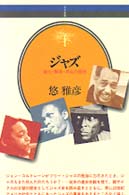Full Description
The Pleasures of Structure starts from the premise that the ability to develop a well understood and articulated story structure is the most important skill a screenwriter can develop. For example, good structure requires a great premise and rigorous character development. Without clear character motivations and goals--which are themselves indicative of key structural beats--your story is going exactly nowhere. Using the simple and flexible 'W' model of screenplay structure developed in the prequel Write What You Don't Know, Hoxter sets this out as its starting point. This model is tested against a range of examples which are chosen to explore the flexibility not only of that model but of movie storytelling more generally. Writers and students often worry that they are asked to work 'to formula'. This book will test that formula to breaking point.
For example, the first case study will offer the example of a well written, professional, mainstream movie against which our later and more adventurous examples can be compared. So the lessons we learn examining the animated family adventure movie How To Train Your Dragon lead us directly to ask questions of our second case study, the acclaimed Swedish vampire movie Låt den Rätte Komma In (Let The Right One In). Both movies have protagonists with the same basic problem, the same goal, and they use the same basic structure to tell their stories. Of course they are very different films and they work on their audiences in very different ways. Our linked case studies will expose how simple choices, like reversing the order of elements of the protagonist's transformational arc and shifting ownership of key story beats, has an enormous impact on how we respond to a structural model that is otherwise functionally identical.
Contents
Preface
Introduction: American Screenwriting Today
Section One: Principles of Movie Storytelling
The Origins of Story, Part One: Evolution, Storytelling, and Selective Advantage
The Origins of Story, Part Two: Written Culture, Ring Compositions, and the Principle of Parallelism
The Skeleton of a Story: Internal Story Logic
Putting Flesh on a Story's Bones: Narration and Pleasure in the Telling of the Tale
Keeping the Story Flowing: Narrative Economy and Screenplay Format
Modeling Movie Structure: The 'W' Model of Story Structure
Alternative Approaches to Scripting
Revision: What Have We Learned in this Chapter?
Section Two: Case Studies
Act One: First Down Angle (Recognition)
Act Two: From Avoidance to Commitment
Act Two: First Up Angle (Avoidance)
Act Two: Second Down Angle (Commitment)
Act Three: Second Up Angle (Resolution)
How to Train Your Dragon as a Ring
Let the Right One In as a Ring
Winter's Bone as a Ring
Section Three: Screenwriting, A Critical Glossary
Part One: Screenplay
Part Two: Development
Part Three: The Screenwriting Industry
Part Four: Story Structure
Part Five: Character Development
Conclusion
Index







